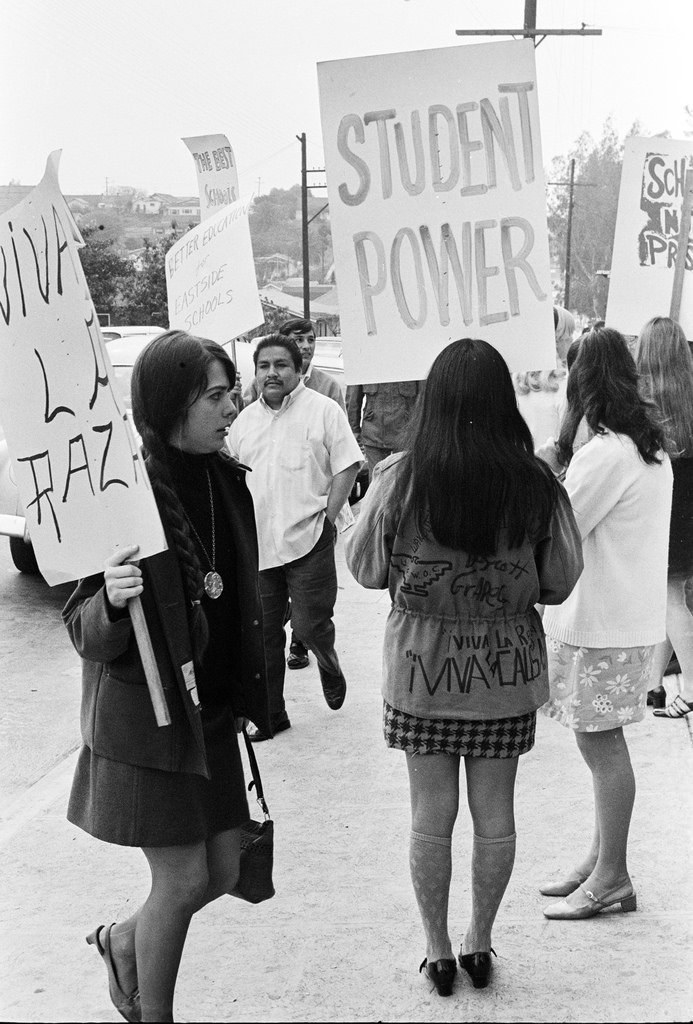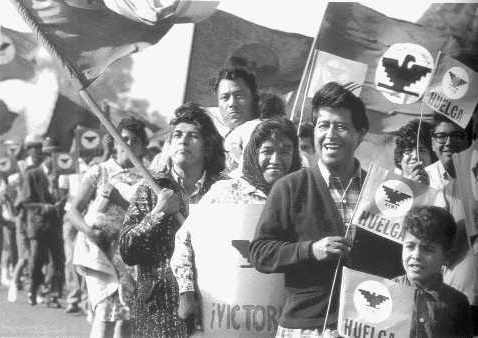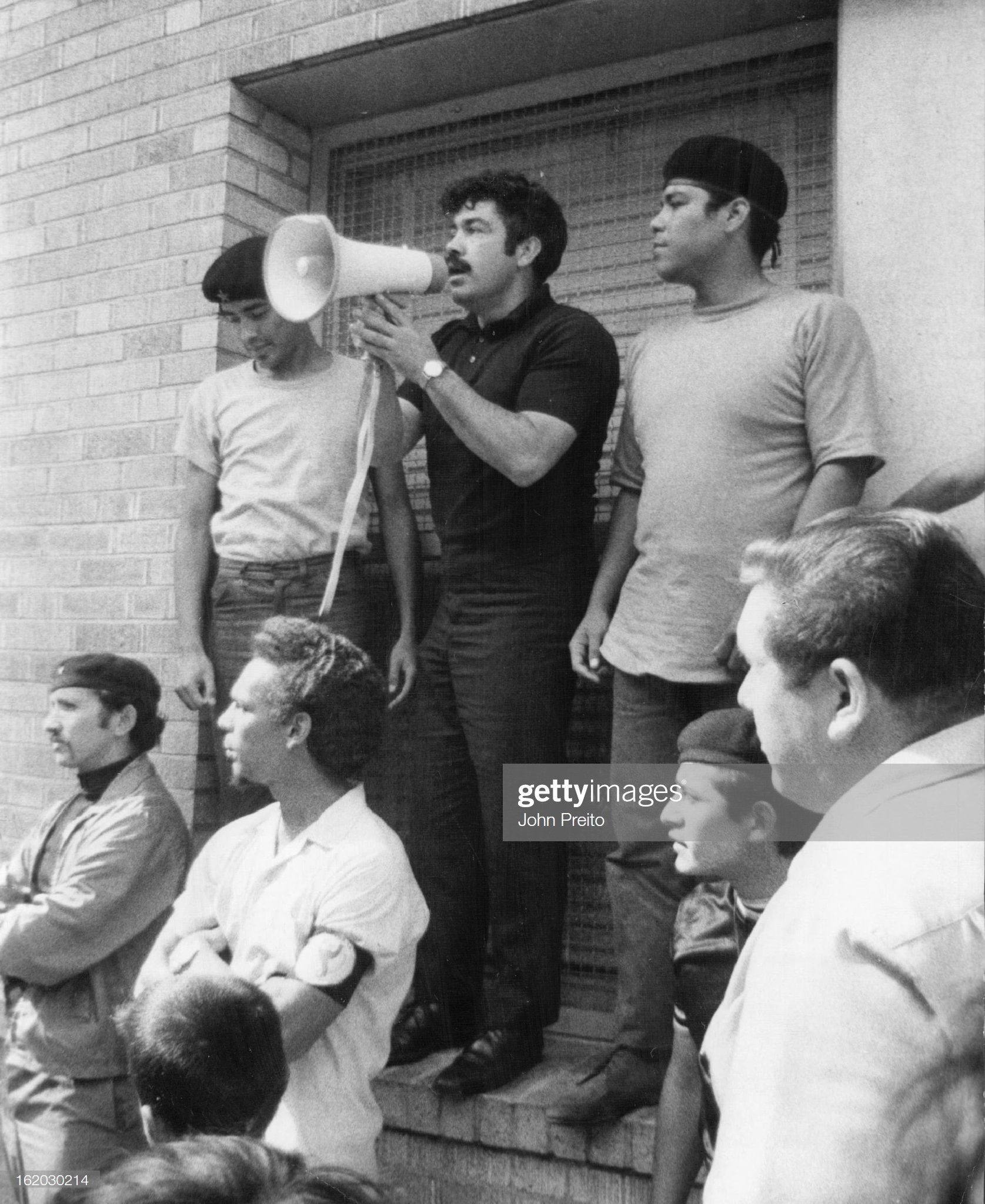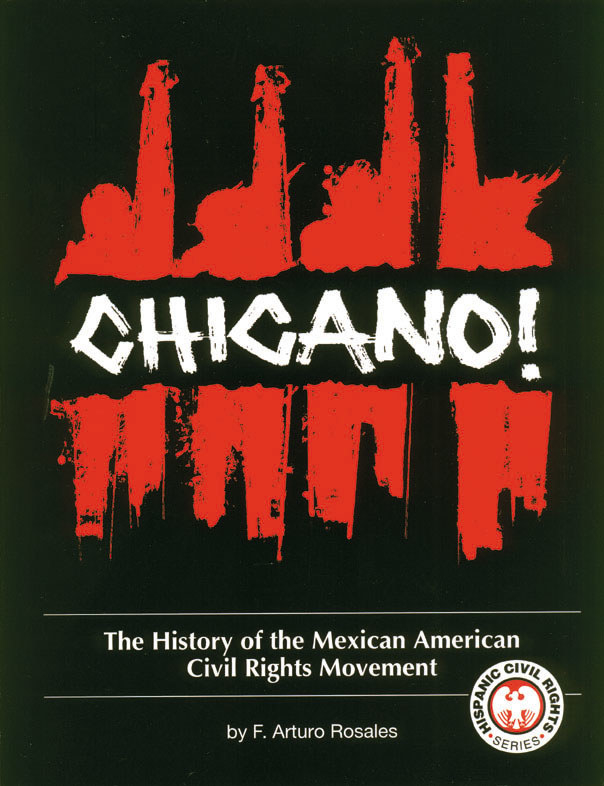Chicano History Mural

Segregation Towards Chicanos

MENDEZ V. WESTMINSTER Newspaper Article

Chicano Student Walkout

Cesar Chavez "Huelga"

Dolores Huerta Leading (UFW)

Rodlofo Gonzales "Crusade For Justice"

WANTED

Book Cover for Chicano!

Index
Tile I: Title Tile II: Summary Tile III: Chicano History Mural Tile IV: Segregation Towards Chicanos Tile V: Mendez V. Westminster Newspaper Article Tile VI: Chicano Student Walkout Tile VII: Cesar Chavez "Huelga" Tile VIII: Dolores Huerta Leading (UFW) Tile IX: Rodolfo Gonzales "Crusade For Justice" Tile X: WANTED Tile XI: Book Cover for Chicano!
Citations
Cesar Chavez Day and the Power of Activism. (2016, March 30). Retrieved from http://beyondchron.org/cesar-chavez-day-reflects-power-of-activism/.
Chicano! The History of the Mexican American Civil Rights Movement. (n.d.). Retrieved from https://artepublicopress.com/product/chicano-the-history-of-the-mexican-american-civil-rights-movement/.
Christine. (1970, January 1). new mural to electify ucsd community. Retrieved from http://ucsd-student-news.blogspot.com/2009/10/new-mural-to-electify-ucsd-community.html. Dolores Huerta. (n.d.). Retrieved from https://doloreshuerta.org/dolores-huerta/.
Dolores Huerta: Revolution in the Fields / Revolución en los Campos. (n.d.). Retrieved from https://www.sites.si.edu/s/topic/0TO36000000L5OBGA0/dolores-huerta-revolution-in-the-fields-revolución-en-los-campos.
Gamboa, S. (2018, May 16). History of Racism Against Mexican-Americans Clouds Texas Immigration Law. Retrieved from https://www.nbcnews.com/news/latino/history-racism-against-mexican-americans-clouds-texas-immigration-law-n766956.
HISTORICAL PHOTOS FROM THE 1968 EAST L.A. WALKOUTS. (2018, March 27). Retrieved from https://www.unitedwayla.org/en/news-resources/blog/historical-photos-from-the-1968-east-l-a-walkouts/.
OMCA COLLECTIONS. (n.d.). Retrieved from http://collections.museumca.org/?q=collection-item/2010941.
Rodolfo “Corky” Gonzales. (n.d.). Retrieved from https://www.escuelatlatelolco.org/Corky.html.
The Court Case. (n.d.). Retrieved from https://58012514.weebly.com/the-court-case.html.
Journey Box Lesson Plan
Instructional objective: To teach the students about the Chicano Civil Rights since this period is skipped in Social Studies.
TEKS:
(b)(20) Citizenship. The student understands the fundamental rights of American citizens guaranteed in the Bill of Rights and other amendments to the U.S. Constitution.
(b)(22) Culture. The student understands the contributions of people of various racial, ethnic, and religious groups to the United States. The student is expected to:
Target grade level:
5th grade
Required materials:
-Buzzfeed
-poster paper
-markers
-blue stickers
-green stickers
-worksheets
-board games
Opening
Gaining Students Attention: Start by handing out only one green or blue sticker per student. Then letting blue students sit at the reading circle with board games while green students sit at their desk with worksheets. Ask the students how they feel? Open up with Civil Rights Movement for Chicanos.
Body
Discuss what is going on in the first picture. 1. Why did the artist paint this mural? 2. Why would this mural be located on campus? 3. Does this mural look like another mural you have seen? 4. What historical perspectives does the artist show with this mural? Discuss what is going on in the second picture. 1. Why do you think this was allowed back then? 2. How do you think Chicanos felt seeing this on businesses? 3.How would you feel if you saw a sign that didn't allow you or your family? 4. What era does this sign compare too that you have learned throughout history? Discuss what is going on in the third picture. 1. How do you think Chicano families felt after seeing this in the newspaper? 2. How would you feel if you found out you were able to have equal rights? 3. Do you think the author of the newspaper did a great job spreading the news? Discuss what is going on in the fourth picture. 1. What do you think the students were thinking about during this time? 2. Do you think you would walk out and protest for a good cause? 3. Why was protesting important for the Chicano students? Discuss what is going on in the fifth picture. 1.What do you think the protestors are thinking about during this walk? 2. Would you walk 300 miles to protest about the inequality of farm workers? 3. What would you do if your family member was a farm worker during this time? Discuss what is going on in the sixth picture. 1. What do you think is going on in the picture? 2. Why would Dolores Huerta be in the front of the line, and what does this symbolize? 3. Do you think it is important to lead a group during a hard time? Discuss what is going on in the seventh picture. 1. What do you think the men in this picture are thinking about? 2. Why does Rudolfo have a Bullhorn in his hand? 3. Why do you think Rudolfo led the organization Crusade for Justice? Discuss what is going on in the eighth picture. 1. Why would the artist use a religious figure in a Wanted poster? 2. Who does La Virgen de Guadalupe symbolize for in modern time as well as the past? 3. How would you feel if you saw your family member or you on a Wanted poster? Discuss what is going on in the first picture. Discuss what is going on in the ninth picture. 1. What does the picture from the book cover symbolize? 2. Why do you think the author wrote this book? 3. Do you think this book would be good to read in a classroom?
Practice Activity
After we finish the Buzzfeed, I will pass out one poster sheet to each group with markers. They will write down about one idea from the history of the Chicano Movement. This will help me see whether or not they understood what I presented to them.
Closing:
“Today we learned about the Civil Rights Movement for Chicanos. We learned that Chicanos faced segregation and racism since early times. Another thing that we learned was the fight for equality by leaders such as Huerta, Chavez, and Gonzales. It’s important that we know about this time period in history. Tomorrow, we will be learning about another group that faced segregation and racism as well.”

